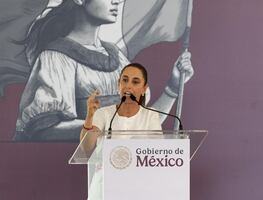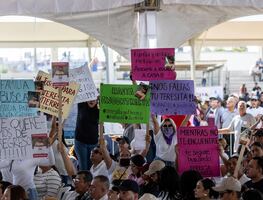Más Información

Osiel Cárdenas, exlíder del Cártel del Golfo, recibe auto de formal prisión; enfrentará juicio por homicidio

Jóvenes mexicanos pasan más de 2 mil horas al año en el teléfono; OCDE alerta sobre su impacto en la salud mental

Sergio Gutiérrez Luna destaca aprobación de 25 reformas en la 66 Legislatura; "Un logro histórico para la 4T", señala

Secretario de Agricultura reafirma defensa del maíz blanco; "Seguiremos apoyando la producción nacional no transgénica", afirma

¿Maíz transgénero? Rubén Rocha corrige desliz durante discurso en Sinaloa; destaca importancia del maíz blanco

Sheinbaum asegura apoyo total a Sinaloa para enfrentar violencia; "Nunca los vamos a dejar solos, aquí está la presidenta"
On April 21 or 22, 1519 , Hernán Cortés disembarked in Villa Rica de la Vera Cruz . His fleet consisted of 10 ships , which he sank near Mexican shores.
Nearly 500 years after the historic event, Roberto Junco Sánchez, head of the Subdirectorate of Underwater Archeology from the National Institute of Anthropology and History (INAH) , along with the American archeologist Christopher Horrell , decided to start an archeological project at Villa Rica following the steps of Del Paso y Troncoso to find Cortés’s sunken ships.
Francisco Del Paso y Troncoso was a Mexican historian and Nahuatl language scholar who started an expedition in 1891 to find Cortés’s ships in Cempoala, Veracruz .
The explorer left a pair of photographs that show a man wearing a diving suit about to enter the ocean, unknowingly becoming one of the first underwater archeologists in the world.
In 2018, Roberto Junco and Christopher Horrell applied for a National Geographic grant to continue Del Paso y Troncoso’s endeavor. Once they obtained the necessary budget resources they formed a team comprised of specialists from the INAH, Mexico’s National Autonomous University (UNAM), and experts from Canada and Spain .
Roberto Junco clarified that, as a scientist, it was not up to him to decide to whom the ships would belong to: “However, they would most likely be Mexican, since they are in national waters.”
The expert added that the team is also looking for the ships of Pánfilo de Narváez , which were also sunk a few years after Cortés near the same spot.
dm





